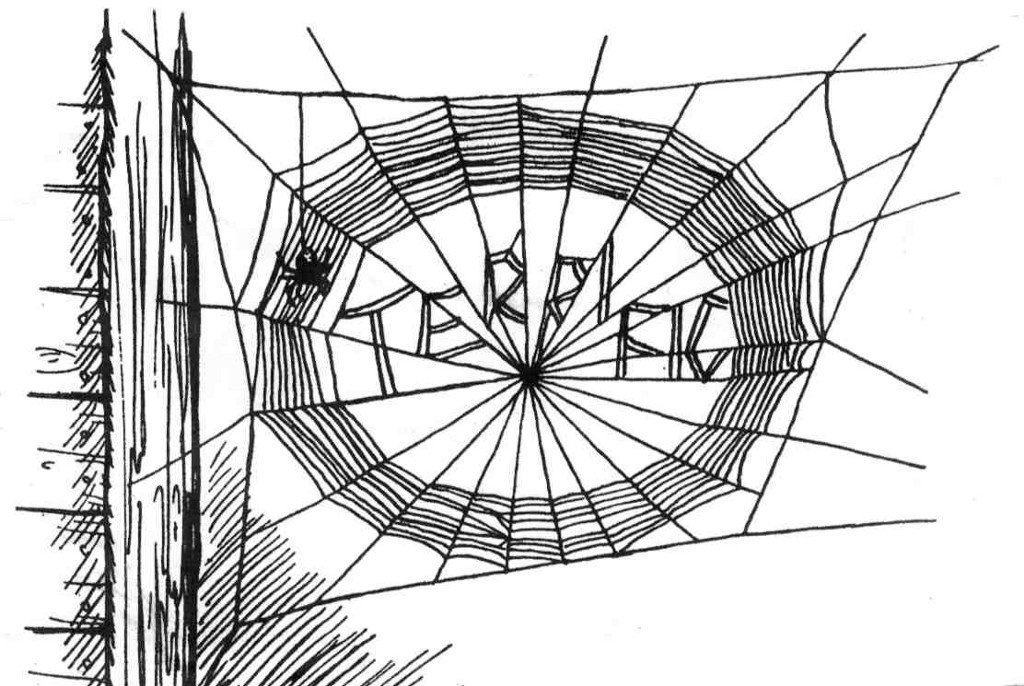Parenting by the Books: ‘Charlotte’s Web’
Finding and making beauty where we can

Charlotte has woven her sac and laid her eggs, and my five-year-old — after a couple weeks of gulping down Charlotte’s Web night after night — has been asking for a reprieve. “Let’s keep taking a break from Charlotte’s Web,” he requests, with only one and a half chapters to go. He doesn’t know he knows, but he knows. Charlotte is tired, speaking more quietly, receding before our eyes.
There’s no danger of putting too fine point on it, because right now, this moment of suspended animation, of coming to terms with beauty and death, is way too overdetermined. It’s the Christmas season of waiting, the darkness of the winter solstice, the birth story’s joy propelling us toward violent death. It’s the looming inauguration, the female sacrifice, the feminine artistry gone unnoticed, friendship, family, and loss.

But of course, winter is also the season of parties! Think about the family and friends gathering for Grandpa’s party during the late-winter sugar snow of Little House in the Big Woods. Ma carefully folding back the paper that enveloped her lovely “green delaine.” Aunts Ruby and Docia, color high, pulling one another’s corsets tight and tighter (“Pull, Ruby, pull!” Aunt Docia said, breathless, “Pull harder!”):
They looked lovely, sailing over the floor so smoothly with their large, round skirts. Their little waists rose up tight and slender in the middle, and their cheeks were red and their eyes bright, under the wings of shining, sleek hair.
Ma was beautiful, too, in her dark green delaine, with the little leaves that looked like strawberries scattered over it. The skirt was ruffled and flounced and draped and trimmed with knots of dark green ribbon, and nestling at her throat was a gold pin. The pin was flat, as long and as wide as Laura’s two biggest fingers, and it was carved all over, and scalloped on the edges. Ma looked so rich and fine that Laura was afraid to touch her.
I recently came downstairs after readying to go out with my husband. I’m mostly a hoodie-and-jeans mom, so my kids don’t normally witness a ton of feminine labor around appearance. But this evening, I’d done my hair — a low chignon — put on a lot of bright lipstick, and a short skirt with a very high and tight waist. Black tights, but still clunky, flat, ankle boots. When I came downstairs, my five-year-old was way across the room. “Mama!” he exclaimed, “You look so tall!” I wasn’t any taller than usual, of course, but he read my bearing correctly. I hoped that maybe he felt a little afraid to touch me in the moment.

There are a lot of threads connecting Aunt Docia’s corset and Charlotte’s web — these forms of feminine, ephemeral, vernacular artistry — but recently I’ve been thinking of how important they are as flares of beauty sent out into a dark world. And that they are stories my son needs to learn: how to recognize and cultivate beauty where you can, and how to understand death.
I’m not sure what my son’s reaction is going to be when we take in Charlotte’s death together. I do know that four- and five-year-olds are unnervingly direct about death; bodies stop working, they understand, and mine likes to gather detail on how, exactly, that might happen: getting “flattened” by a subway train? Falling into lava? Getting picked up by a tornado? Of course, this catastrophizing is a child’s technique for trying to comprehend something like death as far away and out of the ordinary. But when Charlotte dies, alone — “Nobody, of the hundreds of people that had visited the Fair, knew that a grey spider had played the most important part of all. No one was with her when she died” — it’s just her time, like it will one day be everyone’s. I wonder what he’ll think.
I’m hoping he’ll be sustained by a sort of beauty he can’t entirely touch. The detail from the book that he’s most seized on (besides Templeton’s appealing selfishness) is this tiny little one from the beginning. Fern is at school, but can’t concentrate because she’s thinking about how “Wilbur” is the most beautiful name in the world. Her teacher asks her what the capital of Pennsylvania is, and she dreamily responds, “Wilbur.” My son found this scene of absentmindedness hilarious and charming, and he brings it up often. Of course, who knows exactly why, but I can hope that it’s part of a necessary process: the building up of an arsenal of privacy, self-warmth, and aesthetic preference.
Rereading Charlotte’s Web with my son I can see so clearly how the book helped me build my own arsenal of aesthetic preferences, an aesthetic that I guess I have to describe as a sort of maudlin coziness. “It was the best place to be, thought Wilbur, this warm delicious cellar, with the garrulous geese, the changing seasons, the heat of the sun, the passage of swallows, the nearness of rats, the sameness of sheep, the love of spiders, the smell of manure, and the glory of everything.”
It’s very dark right now, just as it is on the Zuckerman’s farm the winter before Charlotte’s babies are born: “After Christmas, the thermometer dropped to ten below zero. Cold settled on the world.” The deep green delaine is in its papers, the sugar snow is mostly just grey, warmed-Earth slush. It’s incredibly unclear where we are going to be able to find our beauty, our fun-time gorgeous Aunts, our best places to be, our garrulousness, even our beloved kind of rats. They are invisible right now, but we have to know that there are silks out there that we just can’t see.